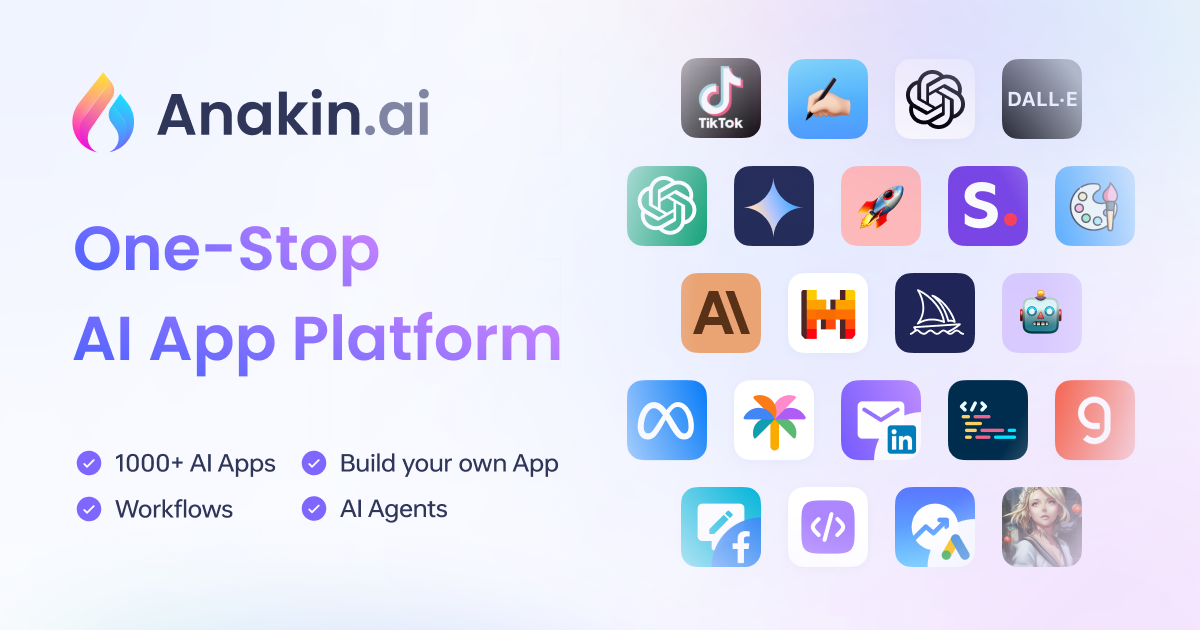The AI community is buzzing with anticipation as OpenAI gears up for the release of GPT-5, the next generation of its groundbreaking language model. Following the massive success of GPT-4 and GPT-4o, expectations are sky-high. But when exactly can we expect GPT-5, and what makes it such a pivotal milestone in AI development?
In this article, we'll dive into the latest updates, explore the reasons behind delays, and highlight the revolutionary features GPT-5 promises to deliver.
If you're excited about GPT-5 and want to experience cutting-edge AI right now, explore powerful models like GPT-4.5, GPT 4.1, Claude 3.7 Sonnet, and Gemini 2.0 Pro available today at Anakin AI Chat Section.

Current Status: GPT-5 Development as of April 2025
OpenAI's GPT-5 remains under active development, now targeted for a Q3 2025 release (July–September). Originally planned for mid-2024, GPT-5 faced multiple delays, prompting OpenAI to release intermediate models like o3 and o4-mini in April 2025.
CEO Sam Altman recently confirmed that GPT-5 is no longer just a language model—it's evolving into a unified AI system. This integrated approach combines advanced reasoning from the o-series models with GPT's linguistic fluency, allowing GPT-5 to autonomously choose the best method for each user query.
Why the Delay? 4 Major Challenges Facing GPT-5
1. Technical Complexity in Model Integration
Combining different AI architectures—like the o-series' advanced reasoning and GPT's language capabilities—proved tougher than expected. Early tests revealed instability when integrating these complex subsystems, requiring additional refinement.
2. Infrastructure Scaling Issues
OpenAI faces unprecedented computational demands, especially after recent successful launches like ChatGPT's image generation feature, which caused server overloads. GPT-5 requires massive GPU clusters, prompting OpenAI to seek significant infrastructure upgrades through partnerships with Microsoft Azure and Nvidia.
3. Expanded Performance Goals
Internal tests indicate GPT-5 could significantly outperform initial expectations, achieving 92% accuracy on graduate-level STEM problems (compared to GPT-4o's 78%). However, optimizing this performance for cost-effective deployment remains challenging, extending development timelines.
4. Competitive Pressure
Competitors like Google's Gemini 2.5 Pro and DeepSeek's R1 have raised the stakes. OpenAI strategically released intermediate models (o3 and o4-mini) to maintain market presence while perfecting GPT-5's advanced capabilities.
GPT-5 Revised Timeline: When Can We Expect It?
Based on recent announcements and internal roadmaps, GPT-5 is now expected to launch between July and September 2025. Key milestones include:
- April 2025: Release of intermediate models (o3 and o4-mini) to gather user feedback and stabilize infrastructure.
- June 2025: Completion of infrastructure upgrades, including new Nvidia GPU clusters and Microsoft's Ironwood AI chips.
- July–September 2025: Final integration testing and official GPT-5 rollout.
This timeline represents a significant delay from initial projections but allows OpenAI to deliver a more robust, revolutionary AI system.
Anticipated Features: What Makes GPT-5 Revolutionary?
1. Autonomous Tool Integration
GPT-5 will seamlessly integrate ChatGPT's full toolkit—including web browsing, Python execution, DALL-E image generation, and data analysis—without manual user input. Imagine GPT-5 autonomously running code to verify mathematical proofs or generating diagrams to simplify complex concepts.
2. Multimodal Chain-of-Thought Reasoning
Building on the o-series' "thinking with images," GPT-5 will process visual data as part of its reasoning process. For example, it could analyze physics diagrams, simulate experiments via code, and cross-reference results—all within a single interaction.
3. Enhanced Contextual Memory and Personalization
GPT-5 will deeply integrate ChatGPT's updated memory system, allowing it to retain context across multiple conversations. This enables long-term tasks like tracking research progress, adapting tutoring strategies, or managing complex business workflows.
4. Tiered Intelligence Settings
To balance computational costs, GPT-5 will offer three modes:
- Standard (Free Tier): Similar to GPT-4o, suitable for everyday tasks.
- Enhanced (Plus Subscription): Deeper reasoning capabilities for complex tasks.
- Pro (Enterprise): Unrestricted compute access for high-stakes applications like drug discovery or advanced research.
Challenges and Controversies Surrounding GPT-5
Ethical and Safety Concerns
GPT-5's autonomous capabilities raise questions about accountability, especially regarding code execution and web browsing. OpenAI promises oversight mechanisms, but details remain limited.
Economic Impact
With a projected training cost of $500 million per run, GPT-5 highlights concerns about AI advancement becoming concentrated within wealthy corporations, contrasting with open-source initiatives like Meta's Llama 4.
Regulatory Scrutiny
Upcoming regulations like the EU's AI Act and the U.S. Executive Order on AI Safety may impose additional compliance requirements, particularly for GPT-5's medical and financial applications. OpenAI has yet to clarify how GPT-5 will navigate these regulatory landscapes.
Conclusion: GPT-5 and the Future of AI
GPT-5 represents a significant leap forward, transitioning from standalone models to integrated AI systems capable of unprecedented autonomy and reasoning. While delays have tempered short-term expectations, the extended development period ensures a more robust, reliable AI.
Keep an eye on upcoming infrastructure updates, beta releases, and competitor responses—these factors will significantly influence GPT-5's final rollout.
Ultimately, GPT-5's success hinges on balancing revolutionary capabilities with practical usability, a challenge central to OpenAI's pursuit of artificial general intelligence.
Excited about GPT-5? You don't have to wait to experience powerful AI. Explore advanced text-generation models like GPT-4o, Claude 3.7 Sonnet, and Gemini 2.0 Pro right now at Anakin AI Chat Section.
